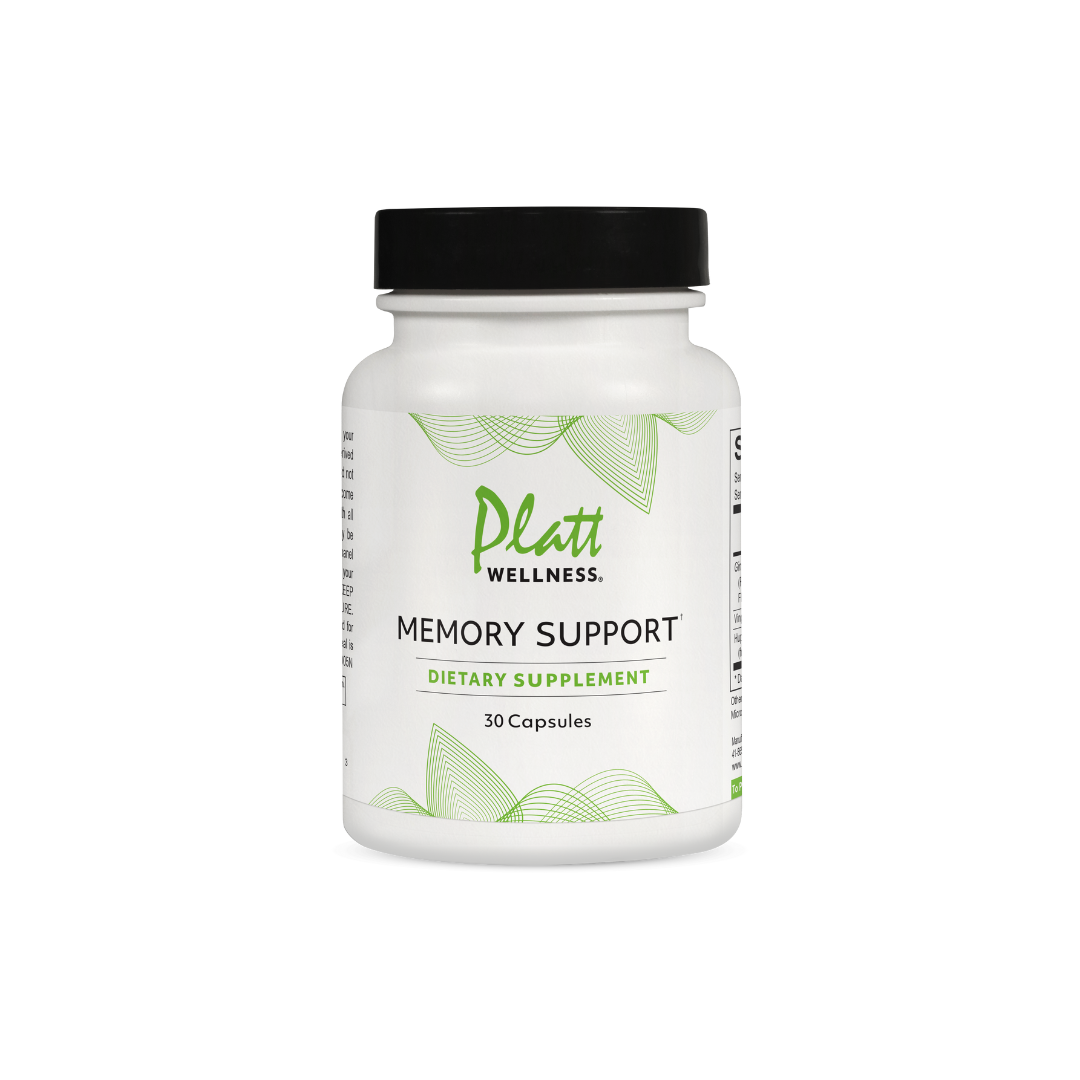From the beginning of my clinical career, my approach to medicine has been preventive. It always made a lot more sense to me to prevent disease rather than to treat it.
As an internist, I continuously deal with patients concerned about their weight or trying to cope with obesity. This condition is clearly wreaking havoc on many levels. If my patients could manage their weight, the task of creating overall wellness would be eased greatly. In other words, I have found that weight management fits easily into a category of preventive medicine.
From the outset I have been struck by these interesting statistics:
• 98 percent of people who lose weight gain it all back again within five years.
• Obesity is the second leading preventable cause of death (smoking is number one).
What if there was a type of cancer that had a 98 percent relapse rate after it was treated? Who would be happy with that type of success rate for cancer? Patients would demand an alternative approach. But for the last 50 years, Americans have bought into the traditional, time-worn medical advice that “you have to diet, exercise, and watch your fat intake” in order to manage your weight. Sound familiar?
By now you should have an understanding of my point of view about weight management, including my conviction that embarking on a weight loss program entails more than determination and will power. Balancing one’s hormones, eliminating certain drugs, and acquiring fundamental knowledge of certain nutritional guidelines set the stage for a successful approach to weight loss and wellness.
Following, I will lay out the logic of how to achieve permanent weight loss.
THE DISEASE CALLED OBESITY
I feel that a major cause of our current epidemic of obesity is that most physicians have been reluctant to look at obesity as a disease and continue to see it as an eating problem. Doctors have an absolutely clear understanding that conditions like hypertension and diabetes are real diseases that cannot be managed using will power. They are not reluctant about helping their patients manage these conditions, even if it means treating them over their entire life span. But obesity, they feel, can be treated with unsophisticated advice and without addressing the underlying cause. If it’s not a disease, why look for a cause? This is like trying to treat a cancer without treating the cause of the cancer.
I prefer a more scientific method. Let’s look at the traditional approaches to weight management to get an understanding of why they don’t work.
WHY CUTTING CALORIES DOESN’T WORK
The problem with calorie restriction (dieting) as a weight loss strategy is that it triggers the body’s survival mechanisms. When we limit our meal plans to 1,200 calories per day or less, the body gets alarmed. Is starvation in the offing? Best to start storing and locking away fat in earnest.
The body is a complex, multi-layered operating system. It has a whole arsenal of techniques for maintaining homeostasis and for ensuring survival. This is something that dieters forget. They become fixated on counting calories, assuming that a body deprived of energy will burn its own fat to survive. But they are wrong. A body deprived of energy will go after its own muscle tissue before it will burn fat. And in the meantime, it will marshal its powerful hormone system to alter the way it metabolizes food for energy.
People who lose weight on a diet are fooling themselves.They get on the scale and see that they weigh less, but they shouldn’t be celebrating. They’ve just burned up muscle tissue— the only kind of tissue that burns fat. Now they have a body that’s less efficient at burning fat. When they “finish” their diet (i.e., stop restricting calories) they will have less of the tissue needed to maintain homeostasis at a low weight.
Ninety-eight percent of people who lose weight gain it all back again within five years.
This is why those who diet not only gain back all the weight they’ve lost, but typically put on an extra two or three pounds. Lost muscle tissue, together with the body’s newly improved fat- storing mechanism, causes them to stabilize at a higher weight.
WHAT ABOUT EXERCISE?
Many people reason that if restricting calories is unrealistic, then the solution must be to exercise more. Exercise, after all, burns calories.
Or does it?
Exercise offers tremendous benefits to those who incorporate it into their lifestyle. It improves cardiovascular health, it makes people feel better, it’s great for bones and muscles, it lowers insulin levels, and so on. However, as the sole approach to weight loss it’s not what it’s cracked up to be.
To lose one pound of fat by exercising, you must burn 3,500 calories. This is equivalent to going out and running 35 miles. The alternative would be walking on a treadmill at four miles per hour for 7 1⁄2 hours.
In my practice I have come upon patients who were living on 800 calories a day and exercising four hours a day, and they couldn’t lose an ounce. Talk about frustration! These people obviously were in a severe starvation mode, and the body will not burn fat when it’s starving.
WHAT ABOUT EATING LESS FAT?
Another timeworn piece of advice is to tell patients to cut out fat from their diets. Interestingly, fat is the only food substance that does not stimulate insulin. And insulin, as you now know, is the number one hormone that creates fat, especially around the middle.
Ever since this country got into a nonfat, fat-free thinking mode, we have had an epidemic of obesity. Foods like popcorn and pretzels, which are nonfat and low in calories, create more insulin than candy does. (However, the message here is not to eat candy.)
As reported in the Framingham Heart Study, which is the largest on-going heart study in the world, the men who ate the most saturated fat (butter, meat, eggs, etc.) weighed the least. Additionally, they had the lowest cholesterol levels and the fewest incidents of coronary artery disease. Fat is not the enemy.
Additionally, given that fat is the preferred fuel for survival, the body is not likely to burn it if a person restricts their fat intake. Even more important: nonfat foods are usually high in carbohydrates (sugar), so eating them causes insulin levels to increase.
THE LOGICAL APPROACH
So we’ve eliminated dieting, we’ve eliminated exercise, and we’ve eliminated eating less fat. Now what are we going to do? Well, it all comes down to metabolism. The trick is to convert your body from a sugar-burning metabolism to a fat- burning metabolism. The way to do this is to take away sugar. The body gets sugar from carbohydrates. All carbohydrates break down into sugar. You must eliminate those particular carbohydrates that create the most sugar and/or stimulate the most insulin production.
It takes three days from the time you stop taking in sugar and certain other carbohydrates for your body to begin burning fat. It takes that long to get the sugar, or glycogen, out of the muscle tissue. Once you get rid of the glycogen, the usual source of energy, the muscles have no choice: they have to start burning fat. After that point, everything you do burns fat. Cleaning the house, walking out to the car, walking your dog—everything you do burns fat. Even while you are sleeping, you are burning fat.
You’re still up against the fact that it takes 3,500 calories to lose a pound of fat, but now you are burning fat constantly.
Most people using this type of approach, depending upon how much they weigh and how active they are, are able to burn anywhere from 7,000 to 10,000 calories per week So their expected fat loss would be two to three pounds per week, or eight to twelve pounds per month.
SAYING GOOD-BYE TO INSULIN
Obviously, this type of approach is not for everybody. However, certain types of people have no other choice except to follow this plan. These are the people who:
- are not big eaters; they can’t shave 3,500 calories from their meal plans in order to lose one pound of fat
- over-produce insulin
- have Syndrome X
- have low progesterone levels
- eat too much sugar.
For most people, insulin is the enemy. Insulin creates fat by taking any sugar the muscles have no need for and placing it into fat cells, where the sugar is immediately converted into fat. Then the insulin sits there preventing release of fat from the fat cells—it is a fat-storing hormone.
People who put out a lot of adrenaline at night are often in the unique position of gaining weight even while they are sleeping. The brain needs glucose to operate and will surge adrenaline to release insulin. This process is called process called glycogenolysis. This is in addition to the other characteristics of elevated night time adrenaline, such as tossing and turning, grinding teeth, restless leg syndrome, and getting up to urinate.
Learn how to prevent adrenaline and insulin surges while sleeping.
The bottom line for most people is that to get rid of fat they have to reduce insulin. If they want to reduce insulin, they have to take away sugar. Sugar stimulates insulin production. In addition, it is important to know that a 5% progesterone cream blocks insulin. This factor contributes to the idea that progesterone is a thermogenic (fat-burning) hormone. Blocking insulin is why progesterone eliminates sleepiness when insulin peaks (between 3-4 pm), sleepiness after eating, and sleepiness while driving.
SIMILAR APPROACHES
Cutting out carbs is the basic premise behind many weight loss approaches: Atkins, the South Beach Diet, Sugar Busters, the Zone, Protein Power, the Carbohydrate Addict’s Diet, the Mayo Clinic Diet, the Grapefruit Diet, the Stillman Diet are some of the better-known ones.
What used to be a low-fat world is rapidly converting into a low-carb world. Many restaurants offer low-carb menus, and fast food places have also jumped on the bandwagon.
This concept of eating low carb is not new. It has actually been around for more than 150 years. There were several successful low-carb programs in the 1800s, though they eventually died out. The idea was resurrected in the 1970s by Stillman and Atkins. Now there are low-carb proponents of all kinds.
One must be aware that no single diet plan is for every- body—there is no “one-size-fits-all” approach. For example, one diet plan allows a “reward meal” at supper (eat as many carbohydrates as you want within the space of an hour). People with hyperinsulinemia—which is perhaps the majority of people with weight problems—will not be successful on this meal plan. I had a patient for whom a half cup of split pea soup would prevent her from burning fat for seven days. For some people, one piece of bread, one carrot stick, or one yam will prevent fat-burning for three days.
Other low-carbohydrate plans give people the impression they can eat as much protein as they want. But this is misleading. The body cannot store protein. Any excess protein the body can’t use or eliminate is converted into sugar for fat storage. In this situation, you can be burning fat (i.e., be in ketosis) and be storing fat at the same rate, and you will not be losing weight.
ADDITIONAL THOUGHTS ON WEIGHT LOSS
In order for the body to burn fat, you have to feed it and water it. The first requirement means that you cannot skip any meals. The body requires fuel 24 hours a day: your heart is beating, you’re breathing, and there are thousands of chemical reactions occurring all of the time. When you skip breakfast, you are going without fuel for 15 hours. In response, the body will automatically store fat for the next 24 hours. So even if you are not hungry in the morning, it’s probably wisest to eat.
The other requirement is water. Fifty percent of your body is water. You cannot burn fat without water. Keep an eye on the color of your urine. If it’s yellow, you’re dehydrated. Drink more water. Try to get your urine as clear as possible.
Alcohol does not enhance weight loss. The body likes alcohol as a fuel. It’s an easy fuel to burn, and it burns at seven calories per gram, almost as much as fat. Given the choice, the body will always burn alcohol before fat. The bottom line is: if you want your body to burn fat, don’t give it alcohol.
There is an old wives’ tale that says if you want to lose weight, you have to give up coffee. In actuality, caffeine may stimulate insulin production, though not in everybody. People with Syndrome X (high insulin, high triglycerides, and low HDL cholesterol) traditionally have the worst problem with caffeine in terms of insulin.
To find out whether you are burning fat, you can use urine-testing strips called Ketostix, which are available in most drugstores. The end-stage of fat metabolism produces ketone bodies, and these are partially eliminated through the kidneys. If you have ketone bodies in your urine, the Ketostix will change color, indicating you are burning fat. Everyone’s metabolism is different, so using Ketostix will help you to find out what you can get away with in your meal plan.
CORTISOL AND WEIGHT
Recently, there has been a lot of attention on the relationship between cortisol and fat. Listening to the advertisements on the radio and television, one could almost surmise that this is the only cause of weight problems. Let me try to put this subject in perspective. The body’s main function in life is survival. Therefore, the body has become extremely efficient over the years at creating and storing fat, which it considers the most important fuel for survival.
The adrenal glands also aid in survival, since in times of extreme danger they produce adrenaline that helps the body either fight a predator or escape. This system worked pretty well in the caveman days. After a cave person saw a saber- toothed tiger, his or her adrenal glands would produce adrenaline, which would raise sugar levels to give the muscles energy for fight or flight. This would also lead to the release of cortisol to deal with the stress created by adrenaline. Cortisol would immediately raise glucose levels via a process called glycogenolysis. However, this system is set up for a stress reaction lasting about ten minutes.
In this day and age, people are subjected to stress continuously—at work, while driving, meeting deadlines, and so on. In these situations, the adrenal glands may be continuously putting out cortisol, which is continuously raising sugar levels, which is continuously raising insulin levels, which is continuously creating fat.
Whether or not cortisol and adrenaline are a major source of weight problems in people is not entirely clear. Suffice to say, however, high levels of these hormones do not promote weight loss.
Stress is never good for the body. The more in balance you are with your hormones and your environment, the healthier you will be. Look for areas in your life that are giving you negative energy and eliminate them. Eliminate time constraints, if you can. Say “no” to road rage.
One last point: exercise is a great way to reduce excess adrenal hormones and reduce stress, and maybe help with weight loss. In addition, the good news is that a 5% progesterone cream not only blocks insulin, it also blocks adrenaline.
THE MAINTENANCE PHASE
In my practice, when patients reach their goal weight, they enter the second phase of the program, which is geared toward preventing fat from returning to the body. As long as a person limits the amount of carbohydrates to the amount of sugar required by muscle tissue, excess carbohydrates will not be stored as fat. In this regard, the amount of exercise a person engages in is the main determinant of weight maintenance. The body’s priority is to replace any sugar that the muscles have burned with sugar—it’s a survival thing. The more sugar (as glycogen) the muscles have burned, the more the carbohydrates you eat will go into muscle rather than being stored as fat.
If people do not want to exercise, they have to be more aware of their carbohydrate intake. People who produce excess insulin because of Syndrome X may require medication (e.g.,metformin, also known as Glucophage) or preferably use supplements such as berberine, which is actually more effective and safer than metformin. Other supplements that can be helpful include chromium and alpha lipoic acid to lower their insulin levels.
However, getting one’s hormones back into balance and eliminating fat-creating medications are perhaps the key to successful weight maintenance. Here, the most important hormones are progesterone and thyroid.
THE MISSING FACTORS
As stated earlier, statistically, 98 percent of people gain weight back after losing it, regardless of the approach they have used. This includes Weight Watchers, Jenny Craig, Lindora, Atkins, and gastric bypass. As soon as people get off any program they have followed, the weight tends to come back on. The reason is that the underlying mechanism that created the fat in the first place is still there, whether it be an over-production of insulin, an under-active thyroid, producing too much estrogen, or taking lipogenic (fat-creating) drugs.
If these factors are not addressed, your body will always be creating too much fat.
A SIMPLE PHILOSOPHY
My method for successful, permanent weight loss is simple. It’s based on principles that have been around for a long time and have worked for many people. But it will not work unless the body’s hormones are in balance.
Since hormone levels decrease as we age, the older you are, the likelier it is that your hormones may need to be adjusted.
For more information on balancing your hormones, I have published an internationally recognized book “The Miracle of Bio-Identical Hormones” and also “Adrenaline Dominance”. These books are available on my website (www.plattwellness.com) along with a 5% progesterone cream called Platt PRO 5% or ProMax 5%. I will answer questions directly at questions@plattwellness.com.









Your vitamin D level is not high enough to raise your calcium level. The K2 included in the
capsule prevents vitamin D from putting calcium into your blood vessels, and it takes calcium
out of your blood vessels and puts it into your bones.
On your lab tests check to see if there is an albumin level. If it is on the high side, this would
explain your minimally elevated calcium level. Needless to say, if you are taking a multivitamin
with calcium in it you might want to discontinue it.
I just had my blood work up. I am a 66 yr old female. I have been taking your Vitamin D3 with K 5,000 units daily. My Vitamin D levels are 57. My concern is that my blood calcium level is 10.6 which is considered high. Could the amount of D I’m taking be the cause of high blood calcium level?